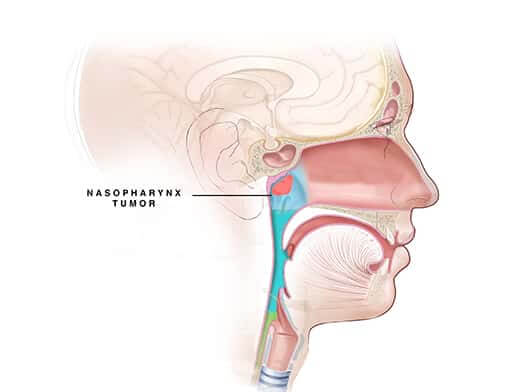- Imaging
- Laboratory
- Nasoscopy – It is a procedure that helps to look inside the nose for abnormalities. A nasoscope is a thin, tube-like instrument with a light and a lens for viewing, which is inserted into the nose. It may also be used to remove tissue samples for testing.
- Upper endoscopy – It is a procedure that helps to look inside the throat, oesophagus, stomach, and duodenum. An endoscope is a thin, tube-like instrument with a light and a lens for viewing and is inserted into the mouth to look for second primaries. It may also be used to remove tissue samples for testing.
- Computed tomography (CT) scan – is a diagnostic imaging procedure that uses x-rays to build cross-sectional images of the body. It also helps to identify the spread of cancer.
-
Magnetic resonance imaging (MRI) – uses the interaction of radio waves and magnetic field, which is processed in a high-speed computer system to produce detailed scan pictures of the tissue, organs, bones, ligament and cartilage.
It is used to identify the spread of Nasopharyngeal cancer to the skull base and the involvement of the cranial nerves, intracranial dura and other internal structures like the brain. This diagnostic technique offers greater soft tissue contrast than a CT scan. - PET CT – is considered to assess spread to regional nodes or distant metastases to other parts of the body. It provides functional and morphological details by utilizing radiation derived from Isotope labelled Glucose molecules to detect cellular glucose uptake in cancer.
- Ultrasound-guided Fine Needle Aspiration Cytology (FNAC)/ Punch biopsy – It is a procedure done under local anaesthesia to collect samples of tissue/ fluid from the enlarged gland in the neck.


